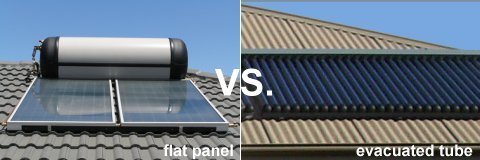
Evacuated tube collectors or solar thermal flat plate? This is a very common question in the solar thermal industry. Eccentrically enough, several people weigh-in, and take different sides. As a Red Sox vs Yankees kind of rivalry, it is an intense debate. In the end, it relies on the job you are working on – the roof, the climate, your budget, and the kind of systems you are using all need to be considered to make the solar evacuated tubes vs. flat plate decision.
There’re many design strictures to take into consideration while looking into solar thermal flat plates or evacuated tubes.
Cost:
Flat plate collectors are likely to be cheaper in comparison to evacuated tubes because they’re a simpler design & easier to make. On the contrary, solar evacuated tubes are likely to be 10 to 15 percent more expensive than their flat plate counterparts, but their processing charges are dropping.
Installation:
Because of their heavy nature, flat plate collectors consume more space and can be hectic to install on particular roofs. On the contrary, evacuated tubes are likely to have lighter components and are easier to install on the roof.
Reliability:
Evacuated tubes are more frequently used in colder climates as they’re more effective than flat plate collectors in extremely cold temperatures. However, in very warm climates, solar evacuated tubes are likely to overheat, so you need to be cautious if you are in a hot region.
Water use:
Evacuated tubes are capable of heating large volumes of water pretty fast and can get the water above 180 degrees. So, if you have a sizeable load, such as in commercial or space heating situations, you should go with evacuated tubes. Flat plate collectors work best with domestic water. Their temperature range fits well within code for hot water use. Also, they can be employed for space heating in low-heat hydronic applications, but you have to size accordingly.
Snow:
Usually, evacuated tubes shed snow very awfully. This is because the tubes produce a strong vacuum. On the other hand, a flat plate can shed snow easily with just a little sunlight.
Structural wind loading:
If you are working on a job where the rafters are dubious, and you are in a region with substantial wind loading, solar evacuated tubes are likely to provide the advantage. They’re lighter in general and they also have less wind resistance…which means the wind can easily pass through the collectors.
So the conclusion for solar evacuated tubes vs. flat plate decision is it depends. They both have their advantages and disadvantages. As mentioned above, it relies on the job you are working on and the area where you are living.

